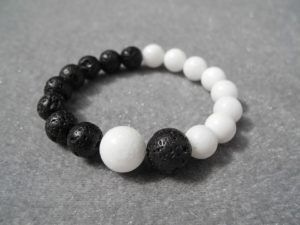Long before I really understood what it meant, I had an obsession with the yin-yang. As a child, I found comfort in its smooth lines and symmetry. At the peak of my adolescent angst, I felt justified in the little black spot that ruined the purity of its white canvas. In my late teens I began to really grasp the meaning of the symbol, and at 17, had it tattooed on my arm. It is this tattoo-and a blurb in an Edmonton newspaper-that triggered the desire to explore this theme a bit further.
The Yinyang Symbol
I don’t really like how my tattoo turned out. I designed it, but the tattooist convinced me to change the design at the last minute, and I’ve never been happy with it. Lately, I’ve been giving serious thought to what I would like to do with it, and exactly what I want it to represent. What does the yin-yang really mean to me?
The Balance
I’ve always had the thought perched in the back of my head that balance is the best thing we can achieve in this life, on this earth. To resist the urge to side with any extreme, to learn moderation, to offer love and help to everyone without sacrificing your own basic needs, and so on. The yin-yang is the ultimate symbol of balance. I think I feel a particular connection to it because my life’s purpose is to achieve my own balance and assist people in finding theirs.
 Many things in my life have led me to believe this, but none so much as a man from my past named Steve. Steve is who the blurb in the Edmonton paper was about. Steve is going to jail for killing a man while driving drunk so plastered he couldn’t see. Steve made me realize that balance is not just about bringing things from the extreme back towards the center, but also about knowing when to just go back to the center alone. After all, there wouldn’t be a center if there was nothing on either side of it.
Many things in my life have led me to believe this, but none so much as a man from my past named Steve. Steve is who the blurb in the Edmonton paper was about. Steve is going to jail for killing a man while driving drunk so plastered he couldn’t see. Steve made me realize that balance is not just about bringing things from the extreme back towards the center, but also about knowing when to just go back to the center alone. After all, there wouldn’t be a center if there was nothing on either side of it.
And that is why I love the yin-yang. While it represents the perfect balance, it also represents the clashing of two extremes-and ironically, the necessity to have both extremes there.





